Physiological Adaptations
Physiological adaptations are the changes that occur within an organism to help it survive and thrive in its environment. These adaptations can occur at the cellular, tissue, organ, or system level and are often a result of evolutionary processes.
Types of Physiological Adaptations
There are several types of physiological adaptations, including:
- Thermoregulation: The ability to regulate body temperature in response to changes in the environment.
- Osmoregulation: The ability to maintain the balance of water and electrolytes in the body, especially in relation to different levels of salinity in the environment.
- Respiratory adaptations: Changes in the respiratory system to optimize gas exchange, particularly in environments with low oxygen levels.
- Circulatory adaptations: Adjustments in the cardiovascular system to ensure efficient transport of nutrients and oxygen to cells, especially in extreme environmental conditions.
- Metabolic adaptations: Alterations in metabolic processes to better utilize available resources and energy in the environment.
Examples of Physiological Adaptations
There are numerous examples of physiological adaptations in various organisms:
- Camouflage: Certain animals have developed the ability to change their skin color or patterns to blend in with their surroundings, helping them avoid predators or catch prey.
- Hibernation: Some animals can slow down their metabolic processes and enter a state of dormancy during periods of food scarcity or extreme cold.
- Countercurrent exchange: Fish gills and bird legs use this mechanism to maximize oxygen uptake and minimize heat loss in aquatic and aerial environments, respectively.
- Increased sweat production: Humans and other mammals sweat more in hot environments to cool down the body through evaporative cooling.
Study Guide
When studying physiological adaptations, it's important to understand the following key concepts:
- What is a physiological adaptation and how does it differ from other types of adaptations?
- Identify and describe the major types of physiological adaptations, providing examples of each.
- Explain how physiological adaptations contribute to the survival and success of organisms in their respective environments.
- Discuss the role of natural selection in the development of physiological adaptations over time.
- Compare and contrast physiological adaptations in different organisms, highlighting similarities and differences.
Additionally, it's helpful to review specific examples of physiological adaptations in various organisms and understand the mechanisms behind these adaptations.
.◂Science Worksheets and Study Guides Sixth Grade. Protection, Reproduction and Cooperation
Worksheet/Answer key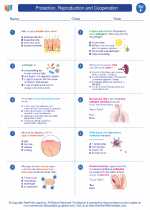 Protection, Reproduction and Cooperation
Protection, Reproduction and Cooperation  Worksheet/Answer key
Worksheet/Answer key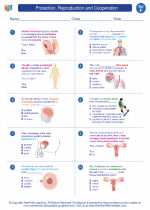 Protection, Reproduction and Cooperation
Protection, Reproduction and Cooperation  Worksheet/Answer key
Worksheet/Answer key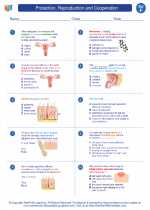 Protection, Reproduction and Cooperation
Protection, Reproduction and Cooperation  Vocabulary/Answer key
Vocabulary/Answer key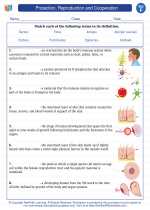 Protection, Reproduction and Cooperation
Protection, Reproduction and Cooperation  Vocabulary/Answer key
Vocabulary/Answer key Protection, Reproduction and Cooperation
Protection, Reproduction and Cooperation  Vocabulary/Answer key
Vocabulary/Answer key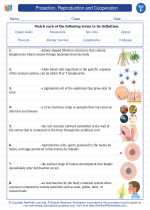 Protection, Reproduction and Cooperation
Protection, Reproduction and Cooperation 

 Worksheet/Answer key
Worksheet/Answer key
 Worksheet/Answer key
Worksheet/Answer key
 Vocabulary/Answer key
Vocabulary/Answer key
 Vocabulary/Answer key
Vocabulary/Answer key
 Vocabulary/Answer key
Vocabulary/Answer key

The resources above cover the following skills:
Reading Standards for Literacy in Science and Technical Subjects
Craft and Structure
Determine the meaning of symbols, key terms, and other domain-specific words and phrases as they are used in a specific scientific or technical context relevant to grades 6-8 texts and topics.